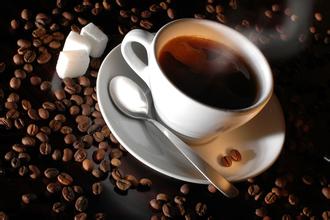The aftertaste of Jamaican Blue Mountain Coffee Flavor and taste the introduction of boutique coffee beans in the manor area.
In 1717 King Louis XV of France ordered coffee to be grown in Jamaica for twenty years.
Blue Mountain Coffee
Blue Mountain Coffee
In the mid-19th century, Sir Nicholas Lawes, Governor General of Jamaica, imported Arabica seeds from Martinique and began planting them in St. Andrew. To this day, St. Andrew's is one of the top three growing regions for Blue Mountain coffee in Jamaica, along with Portland and St. Thomas. Within eight years, Jamaica exported more than 375 tons of pure coffee. Coffee production peaked in 1932, harvesting more than 15000 tons of coffee.
The Jamaica Coffee Industry Board was established by the Government of Jamaica in 1950 to establish quality standards for Jamaica coffee and oversee the implementation of quality standards to ensure the quality of Jamaica coffee. The Commission awards a special official seal to Jamaica's exports of green and roasted coffee and is the world's highest national coffee authority. Those that can represent the origin of Blue Mountain Coffee include Mavis Bank Coffee Factory (M.B.C. F), Blue Mountain Coffee Cooperative Factory (M.H.C.C.T.), Portland Blue Mountain Coffee Cooperative Plant (P.X.X.S.H.), Coffee Industry Association (Wallenford), Coffee Industry Association (St. John's Peak) and Blue (J.A.S.) 6 kinds of logo.
By 1969, the situation had improved, as Japanese loans had improved the quality of production and thus secured the market. By now, the coffee has reached the point of being fanatically loved.
By 1981, about 1500 hectares of land in Jamaica had been cleared for coffee, followed by another 6000 hectares. In fact, today's Blue Mountain region is a small area of only 6000 hectares, and it is impossible that all the coffee labeled "Blue Mountain" is grown there. Another 12000 hectares are devoted to growing two other types of coffee: alpine premium coffee and Jamaica premium coffee

Important Notice :
前街咖啡 FrontStreet Coffee has moved to new addredd:
FrontStreet Coffee Address: 315,Donghua East Road,GuangZhou
Tel:020 38364473
- Prev

Rich aroma of Indonesian Manning Coffee Flavor and Taste introduction of Fine Coffee in Manor
In 1967, Indonesia established the Association of Southeast Asian Nations (ASEAN) with Malaysia, the Philippines, Singapore and Thailand. ASEAN already has 10 members, and Indonesia is one of the most influential members. [6] the Asian financial crisis in 1997 had a comprehensive impact on Indonesia and caused instability. In May 1998, President Suharto, who had been in power for 32 years, resigned.
- Next

Introduction of Tanzania Coffee Flavor and Flavor Coffee in Manor production area
First experience of AA coffee beans in Tanzania: Tanzania coffee beans are absolutely comparable to neighboring Kenya, but the quality of coffee in the country is not strictly controlled, and carelessness in many processes often destroys the quality of coffee (such as transportation). Good quality Tanzanian coffee beans are divided into AA and A grade. The raw beans of this Tanzanian AA coffee bean look neat and have a delightful hint.
Related
- Detailed explanation of Jadeite planting Land in Panamanian Jadeite Manor introduction to the grading system of Jadeite competitive bidding, Red bid, Green bid and Rose Summer
- Story of Coffee planting in Brenka region of Costa Rica Stonehenge Manor anaerobic heavy honey treatment of flavor mouth
- What's on the barrel of Blue Mountain Coffee beans?
- Can American coffee also pull flowers? How to use hot American style to pull out a good-looking pattern?
- Can you make a cold extract with coffee beans? What is the right proportion for cold-extracted coffee formula?
- Indonesian PWN Gold Mandrine Coffee Origin Features Flavor How to Chong? Mandolin coffee is American.
- A brief introduction to the flavor characteristics of Brazilian yellow bourbon coffee beans
- What is the effect of different water quality on the flavor of cold-extracted coffee? What kind of water is best for brewing coffee?
- Why do you think of Rose Summer whenever you mention Panamanian coffee?
- Introduction to the characteristics of authentic blue mountain coffee bean producing areas? What is the CIB Coffee Authority in Jamaica?

